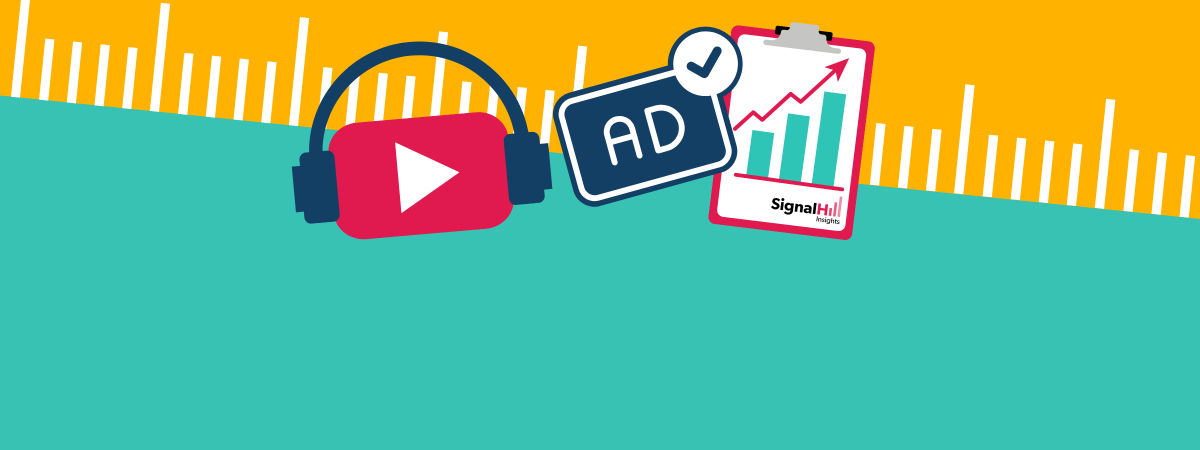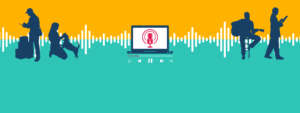Paul Riismandel
The growing prominence of YouTube in podcasting dominates industry conversations today. And for good reason. It changes much of how we all think about a “podcast.”
At Signal Hill Insights, we’ve had a front row seat to watch the growth of YouTube as a podcast platform over the past six years. We first identified its use for podcast consumption in the 2019 editions of the Cumulus Media / Signal Hill Insights Podcast Download study in the US and the Canadian Podcast Listener. (Unless otherwise noted, all the audience stats for their respective countries in this post come from these two studies.)
Six years ago, Apple Podcasts was the leading podcast platform – YouTube was in third place behind Spotify. Jumping forward to Fall 2024, just over a third of podcast listeners (34% in the US, 35% in Canada) say they use YouTube most, and Apple Podcasts has fallen to third place.


This shift has made YouTube top of mind for both publishers and advertisers who want to reach this growing share of the audience. Yet, YouTube is a very different platform compared to the RSS-based open-ecosystem that has distributed and monetized audio podcasts freely across nearly any player app or platform. Instead, YouTube is a closed ecosystem, where media is hosted and played all within the platform’s walled garden.
YouTube for Podcasts Today: Kind of Like Podcasting for Audio in 2015
When it comes to video podcast ads, and measuring those ads, it helps to go back almost a decade to the time before there was podcast adtech, and the attribution and brand lift solutions enabled by that adtech. Back then the vast majority of podcast ads were embedded or “baked-in,” recorded as part of the audio file, where an episode contained the same set of ads, in the same places for every listener, no matter where or when they downloaded or heard it.
Although YouTube has long offered its own Adsense ads, it does not yet offer the ability for publishers to dynamically insert their own ads into their video podcasts. When a publisher sells video podcast ads, those ads are essentially baked-in, embedded in the video, just like 2015. But they cannot be measured with Google’s own brand lift tool – which is reserved only for Adsense – or pixel-based attribution or brand lift studies, because Google does not permit pixels or sharing of needed identifiers.
Yet, We Can Measure YouTube Podcast Ads Today
Back in 2015 when I was at Midroll Media I was measuring brand lift on baked-in podcast ads. And that ability opened doors with advertisers who were not comfortable investing in this new medium without understanding their return on investment – especially those focused on branding and upper-funnel metrics, like building awareness, favorability or consideration. That’s why we at Signal Hill Insights are very pleased to announce that we can offer brand lift measurement on embedded YouTube podcast ads today.
In fact, we’ve been piloting YouTube measurement for the past year, learning how audiences respond to this platform, and how it differs from audio podcasts. Though it is early days, what we’re seeing is that host-read video podcast ads share the same benefits as audio host-reads. Nothing is lost in translation, and every video podcast campaign we’ve measured has met or exceeded Signal Hill benchmarks for upper-funnel metrics. There are also signs that video enhances audiences’ connection with hosts, and can help with visual, as well as auditory branding.
We use controlled exposure brand lift methods as well as direct recruitment of viewers who were organically exposed to episodes containing specific ads. s This delivers advertisers and publishers close parity to the measurement we offer for audio podcast ads.
What Measures Podcasts Measures YouTube Creators, too
Our video brand lift solutions are not limited to podcasts, either. An increasing number of YouTube creators are making host-read, embedded ads, too. Even though these are often more visually focused, consistent with each channel’s style, from a technological point of view they are indistinguishable from host-read embedded podcast ads. They aren’t dynamically inserted and they aren’t measurable using pixel-based methods. But we can also measure these creator sponsorships.
YouTube Represents a Net Gain for Podcasts, and Audio
Make no mistake. This doesn’t mean that Signal Hill is moving away from podcasting or audio. This is where Signal Hill’s roots are planted, and we remain steadfastly committed to audio. Rather, we’re making sure we deliver the measurement that helps ensure podcasts can continue being successfully monetized, regardless of where and how they are consumed.
Nor is Signal Hill’s video podcast brand lift offering an indication that video has become necessary for all podcasters. As I mentioned earlier, we’ve been studying this trend since the start, and the evidence suggests video has been a net plus for podcasting – baking a bigger pie, if you will – and has not siphoned significant share from audio-only listening.
Since 2019 the monthly podcast audience in North America has grown substantially, increasing by 50% in our Canadian Podcast Listener Study and by 72% in the US, per Edison Research’s Infinite Dial. It’s hard not to conclude YouTube has been an additive driver, especially since 79% of US consumers tell us that watching video podcasts has replaced time with other media – like television or TikTok – not audio podcasts.
While YouTube is presently the most used podcast platform in the US and Canada, it still has much less than a majority share. Moreover, YouTube doesn’t hold a monopoly on the shows consumers watch there. A solid majority of YouTube viewers also consume at least some of the same podcasts on audio platforms – 55% in the US and 68% in Canada.
Simply put, audio remains a strong, and necessary, foundation for podcasting. Video is part of the medium’s evolution and advertiser support is fundamental to its continuing prosperity.
In the modern media environment podcasters are creators, and we are here to support them, along with their sponsors. Signal Hill will continue to expand our measurement offerings as podcasting grows and changes to serve even more audiences.




